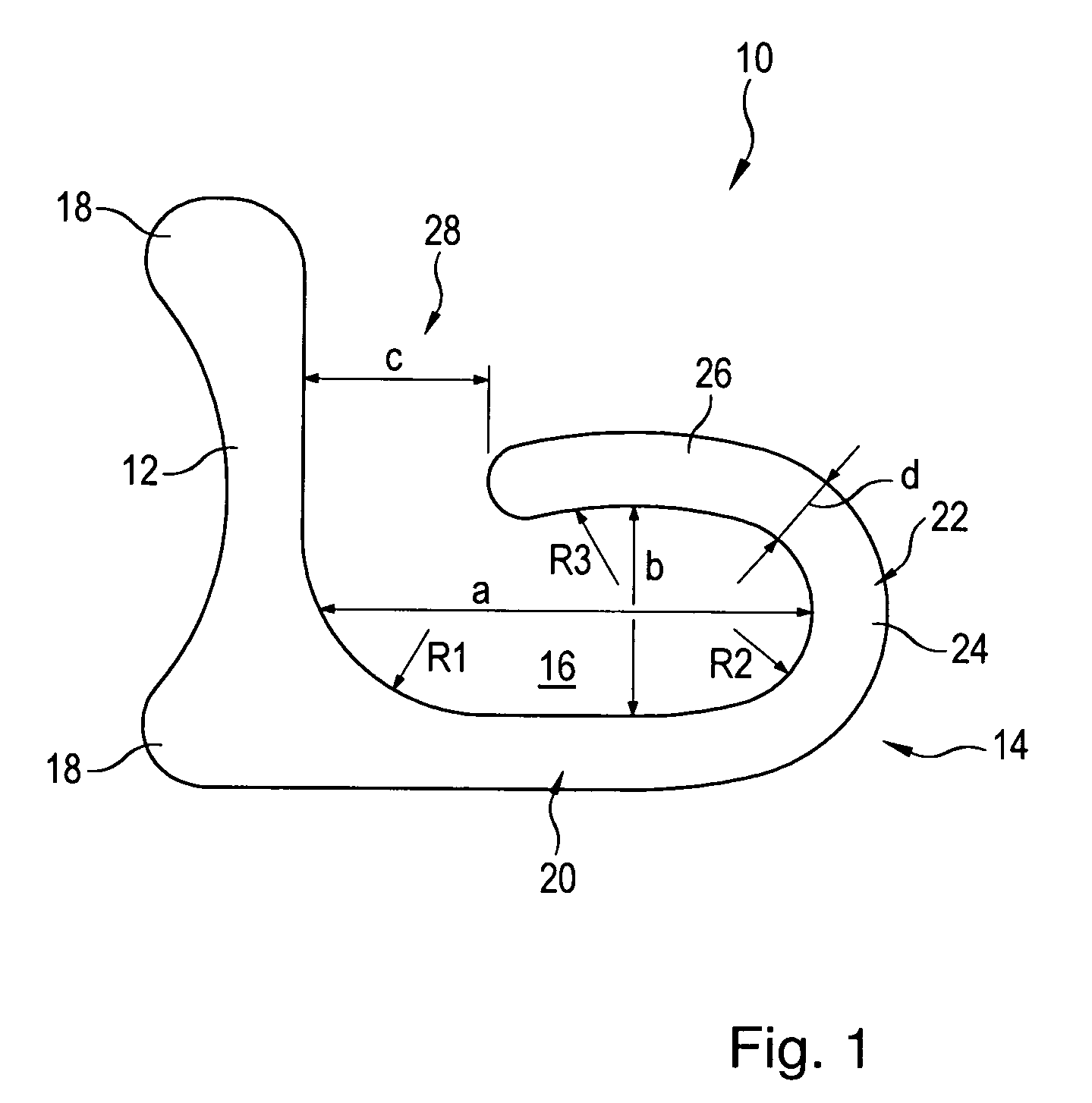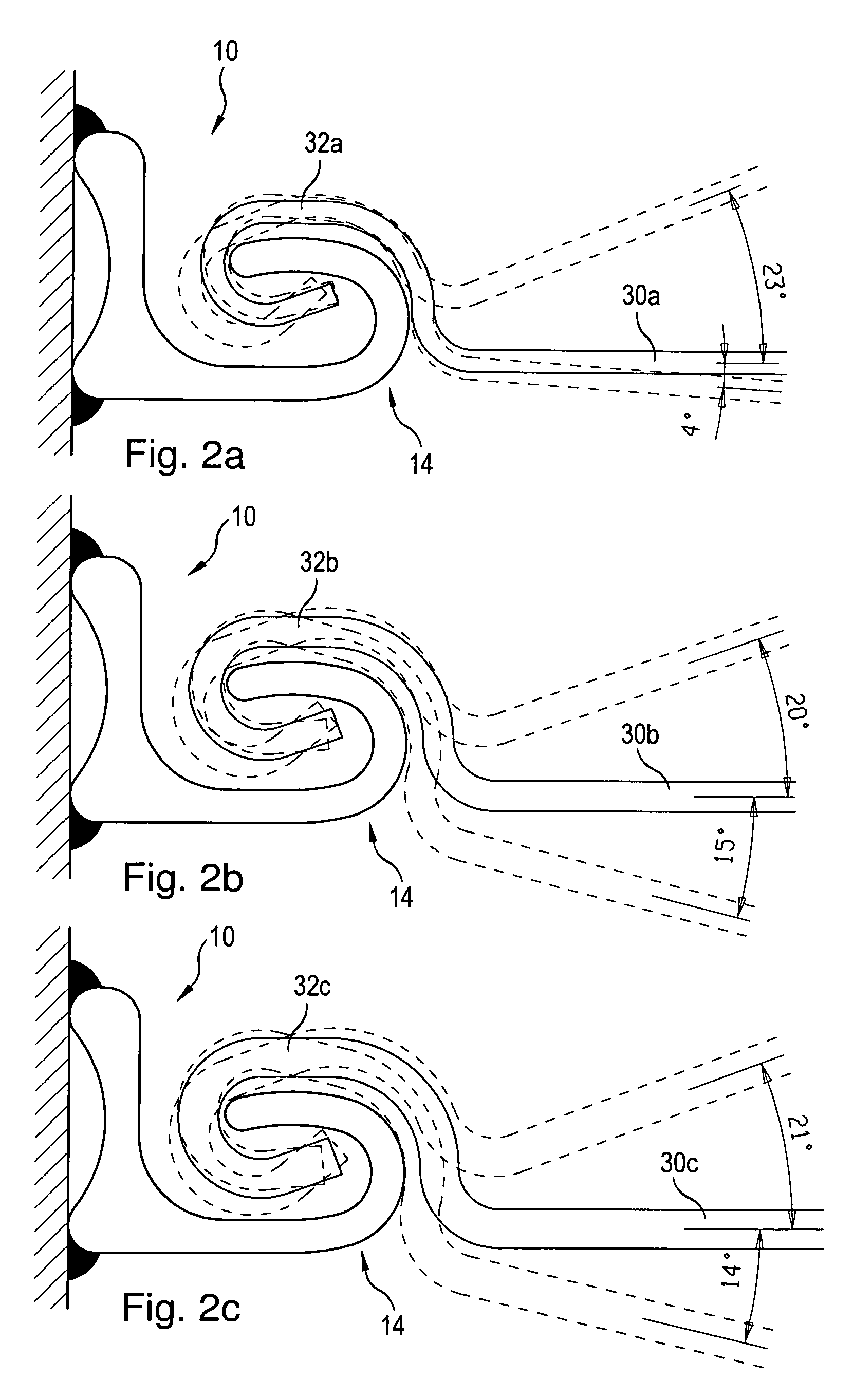Connection element and a sheet pile wall having such a connection element
a technology of connection elements and sheet pile walls, which is applied in the direction of thin material processing, artificial islands, construction, etc., can solve the problems of simple interlock configuration, connection elements encountered problems, and limit the production of interlocks for connecting
- Summary
- Abstract
- Description
- Claims
- Application Information
AI Technical Summary
Benefits of technology
Problems solved by technology
Method used
Image
Examples
Embodiment Construction
FIG. 1 shows a top view of the front face of a first preferred embodiment of a connection element 10 according to the invention. Viewed across its length, the connection element 10 has a uniform cross-section and is designed as a weld-on profile.
The connection element 10 features a base strip 12 with a hook strip 14 protruding at least approximately at a right angle from the longitudinal edge of said base strip as shown at the bottom of FIG. 1 and enclosing together with the base strip 12 an inner chamber 16. Two weld-on elevations 18 are provided at the back side of the base strip 12 that points away from the hook strip 14 and transitions into the respective longitudinal edge of the base strip 12.
The hook strip 14 features a straight connection section 20 that transitions flush into the longitudinal edge of the base strip 12 and that transitions at its end into an arc-shaped hook section 22. The inner side of the base strip 12 that defines the inner chamber 15 transitions into the ...
PUM
 Login to View More
Login to View More Abstract
Description
Claims
Application Information
 Login to View More
Login to View More - R&D
- Intellectual Property
- Life Sciences
- Materials
- Tech Scout
- Unparalleled Data Quality
- Higher Quality Content
- 60% Fewer Hallucinations
Browse by: Latest US Patents, China's latest patents, Technical Efficacy Thesaurus, Application Domain, Technology Topic, Popular Technical Reports.
© 2025 PatSnap. All rights reserved.Legal|Privacy policy|Modern Slavery Act Transparency Statement|Sitemap|About US| Contact US: help@patsnap.com



